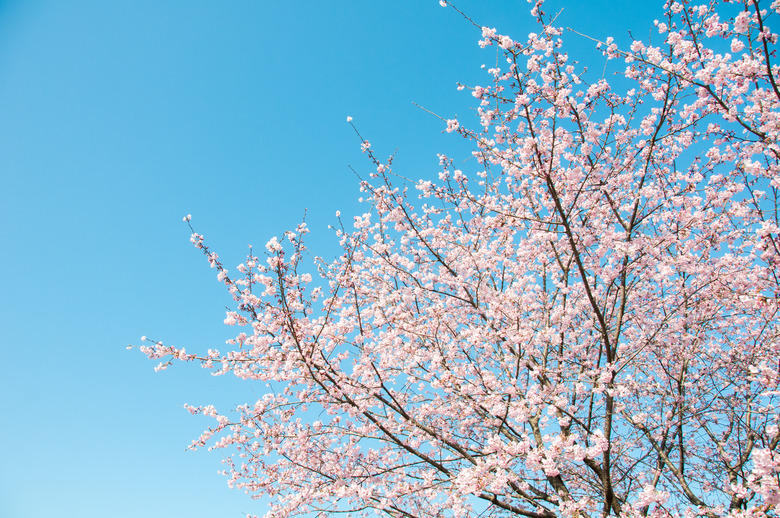Why Are There No Blossoms On My Flowering Cherry Tree?
We may receive a commission on purchases made from links.
Flowering cherry trees (Prunus spp.) explode in color in spring. From the famed National Cherry Blossom Festival in Washington, D.C., to your backyard, flowering cherry trees put on quite a show in March and April in most areas of the country. However, flowering cherry trees can suffer a blight that causes blossoms to wilt and rot.
Tip
If the blossoms on your cherry tree are collapsing faster than they are blooming, they are probably suffering from brown rot blossom blight, which causes the blossoms to turn brown and die.
Brown Rot Blossom Blight
Brown Rot Blossom Blight
Ornamental Japanese flowering cherry trees (Prunus serrulata) are hardy in much of the United States, mostly in U.S. Department of Agriculture plant hardiness zones 5 through 8. However, they are susceptible to a number of insect and fungal problems. One fungal problem is brown rot blossom blight, which causes blossoms to die prematurely.
Most ornamental cherry trees bear few (if any) fruits, but they do produce a show of blossoms that color the spring landscape with shades of pastel pink that range from deep rose to a pinkish-white. Brown rot blossom blight historically is a fungal infection that strikes fruit-producing trees, including cherries.
More recently, however, brown rot has been affecting the blossoms of ornamental cherry trees. Wet weather encourages it. Powdery, brownish-gray spores appear on flowers. If the blossoms don't drop off the tree, the spores spread by dropping into the twigs, causing cankers. This encourages more spore growth.
Treating Brown Rot
Treating Brown Rot
There's no way to eliminate the disease. The best way to deal with this blossom killer is to prune the dead parts of branches. Make sure you then throw the branches in the trash, not the compost pile, or the disease may remain active.
When planting your cherry tree, give it space. Make sure other trees aren't growing too closely. Also, prune your tree when branches grow closely together to prevent crowding and the creation of conditions that encourage brown rot.
If this doesn't eliminate the problem, you'll need to apply fungicides to the tree to control brown rot. If your tree is over 10 feet tall, you should use a professional to apply the fungicide. The best fungicides to use are fruit tree fungicides that come in powder form or liquid concentrate form and copper-based fungicides that come in spray or dust form.
Good Cherry Tree Practices
Good Cherry Tree Practices
The best way to prevent your flowering cherry tree from losing its flowers is to plant it properly. The Prunus 'Kanzan' cultivar is one type of cherry tree that's particularly susceptible to this fungal infection.
Most cherry trees like full sun, so make sure you choose a spot with six or more hours of sunlight each day. Give the tree growing room by making sure you space your tree 10 to 20 feet from other plants and not too close to your house. Dig a hole that's wider than the root ball before planting.
Keep your newly planted tree watered and add some mulch around the tree, taking care to keep the mulch from touching the trunk. Water only in an extended drought. Other than for disease, prune only from May to August. If a soil test indicates the need for fertilize, fertilize in the spring. Watch the blossoms for signs of brown rot. This fungus is best caught early.
References
- Washington State University Extension: Cherry: Brown Rot Blossom Blight and Fruit Rot
- Missouri Botanical Garden: Prunus serrulata
- BrighterBlooms.com: All About Cherry Blossom Trees: Facts and Planting Tips
- Homestead Gardens: Blight Killing Branches on Flowering Cherry Trees
- Better Homes & Gardens: Flowering Cherry Tree
